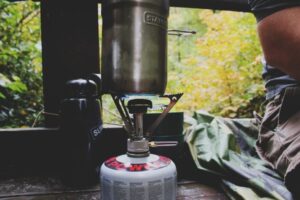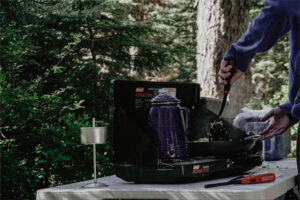
We’ll split down day-hiking needs by trek length, taking into account elements like trail conditions, weather, and other variables. Use the proper helpful checklist when preparing for any day trek to ensure you don’t overlook anything crucial.
- Navigation:
A topographical map and a reliable compass are two essential navigation tools for any trek into the bush. They’re dependable, lightweight, long-lasting, and never run out of batteries. They can help you avoid being lost or find your way back, but they are useless if you don’t know how to utilize them. So, before your next vacation, brush up on how to use a map and compass and how to avoid getting lost. We also recommend storing your maps in a transparent, water-resistant map pouch to keep them dry and safe.
- Sun protection:
Even if the weather appears gloomy, sun protection is an essential aspect of every backcountry excursion. Every hiking excursion should include sunscreen, spf lip balm, sunglasses (ideally polarized), a brimmed hat, and protective gear. Bad sunburns, bleeding broken lips, and conditions like snow blindness can be crippling if the sun’s strength is not respected.
- Insulation:
Weather can vary rapidly on any wilderness trip, we always recommend packing an extra layer of insulating apparel, especially on warm weather outings. When the temperature drops, a simple layerable, quick-dry clothing system will keep you safe and comfortable. For example, regardless of the weather, we bring a down hooded jacket and rain gear on practically every hiking excursion.
Avoid cotton items for your clothing system since they take a long time to dry and absorb heat from your body. Wear quick-drying synthetic layers instead, and regulate perspiration to keep your garments from becoming soaked with sweat. As soon as you stop trekking, wet clothing will swiftly freeze you to the bone.
- Illumination:
Carry a reliable light on every hike, even if you don’t anticipate on staying out beyond dark. A trek can sometimes take longer than intended, and becoming lost in the dark can quickly exacerbate a poor situation. If you ever find yourself in the wilderness as the sun sets, a headlamp will come in handy to help you find your way home. Normally hike with your phones, and the flashlights on them serve as a nice backup light source. Before you go on your hike, make sure to test your light batteries.
- First aid supplies:
When venturing into the bush, always have a well-stocked first-aid kit with you. The majority of hikers purchase a pre-packaged first aid kit, which provides a lightweight and dependable arrangement for minor diseases. As you earn trial experience, you’ll be able to add or withdraw items from your first aid kit according to your specific needs. Also, always replace everything you use as soon as you come home from your adventure.
- Fire:
Knowing how to start a fire in bad weather may be a life-saving ability in the bush. Check out this video we created about making fires in tough situations for fast instruction. Always pack two little Bic lighters (one is kept in a dry spot as a backup), a few stormproof matches, and a few small Firestarter’s to make starting a fire as simple as possible. Only use the fire starters, when necessary, but they make creating a fire considerably easier, especially in damp weather.
If you want to go more survivalist, you may bring a small fire, but little lighters work just well for us. Additionally, some hikers construct their own fire starters, which are inexpensive and simple to manufacture, but we prefer the convenience and ease of store-bought products.
- Repair kit & tools:
On every backcountry trek, bring a lightweight multitool and basic repair tools. A basic multi-tool knife, such as the Swiss, will come in handy in several scenarios. We usually trek with a little bit of duct tape and Tenacious in our packs since they are fantastic tools for fixing gear in the backcountry.
- Nutrition:
When packing for a trek, be sure you have enough calories to keep you going for the duration of the hike. While hiking, we frequently nibble on energy bars, dried fruits, almonds, and jerky. We prefer to carry tortillas or bagels and construct sandwiches with hard meats (like salami) and cheeses (like parmesan) for a more substantial lunch.
- Hydration:
It’s crucial to stay hydrated on the trail in order to keep your body’s critical systems working smoothly. Water helps you cool down when you’re hot, warm up when you’re cold, and keeps your muscles and joints working correctly so you don’t get hurt when hiking.
pack extra water for the duration of your journey, or pack a lightweight water filter and be aware of water sources along the way. One gallon (or four Liters) of water per person is suggested for a 24-hour supply. Make sure you have easy access to water, such as water bottles or a hydration pack, so you may drink freely while hiking. It’s also crucial to note that, while water is essential, it’s also one of the heaviest items you’ll carry on the path. Carrying a lot of additional water should also be avoided.
We hope this information assists you in remaining safe and comfortable on your next wilderness hiking adventure. If you find this information beneficial, please share it with your friends.






